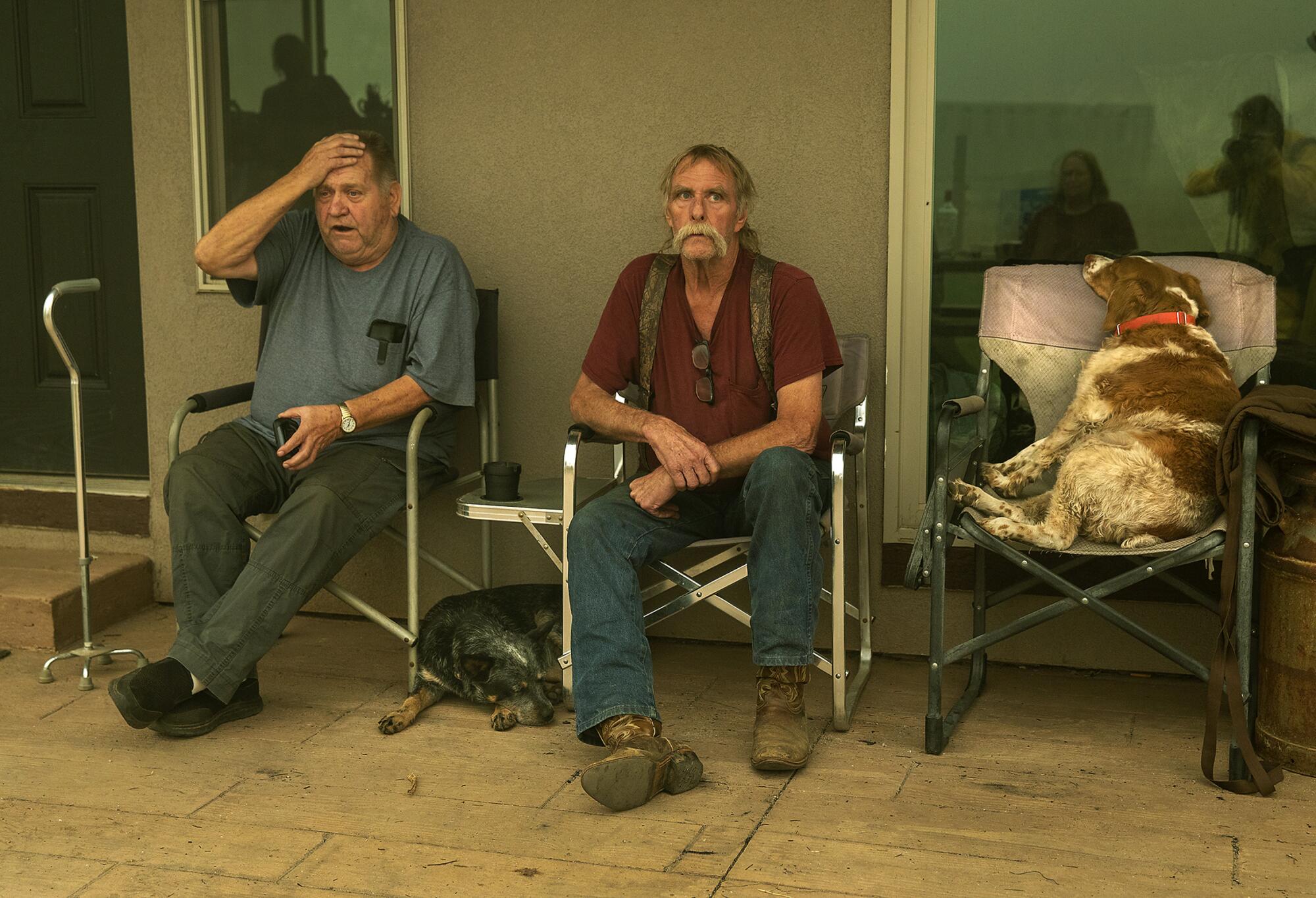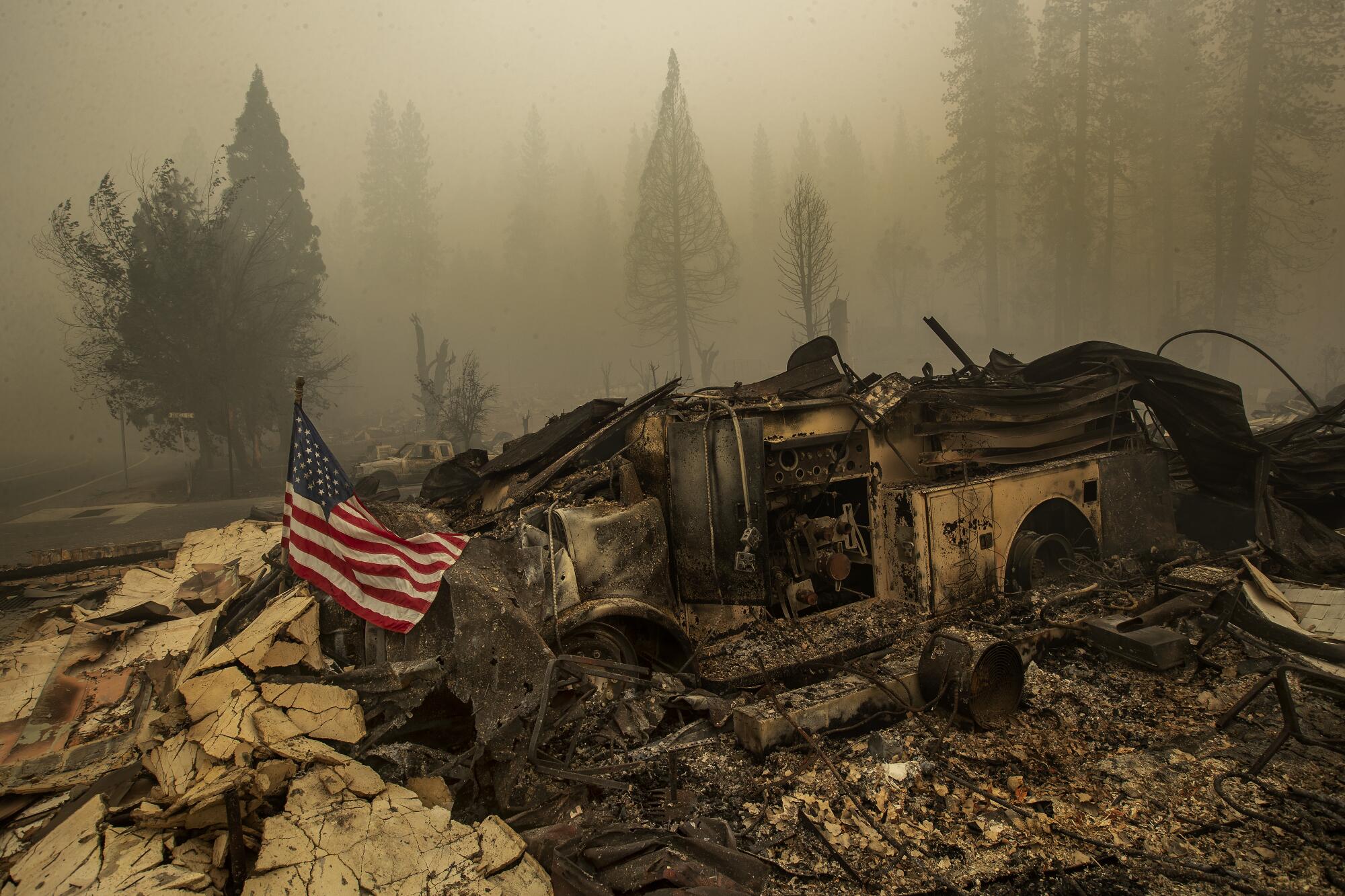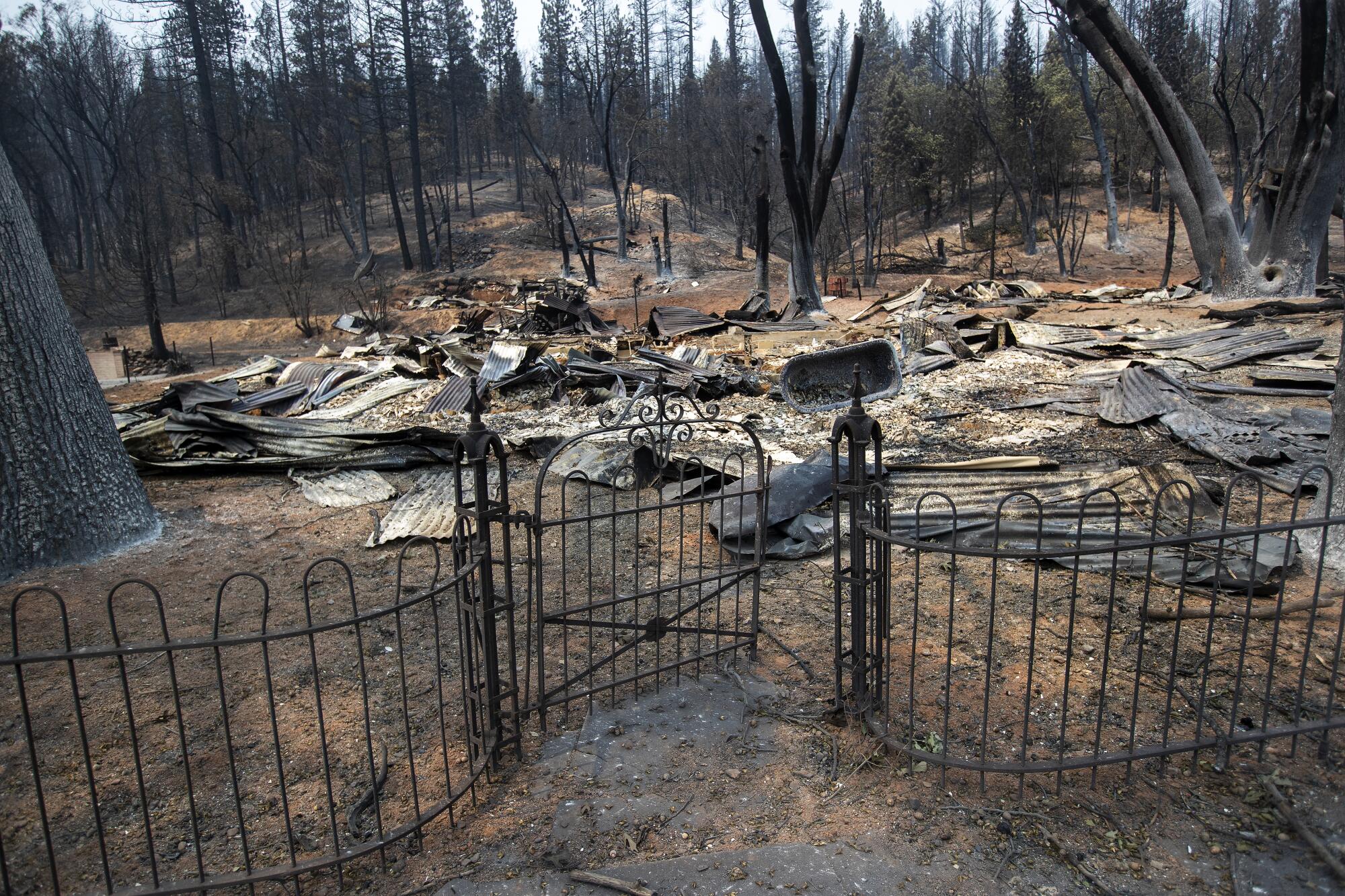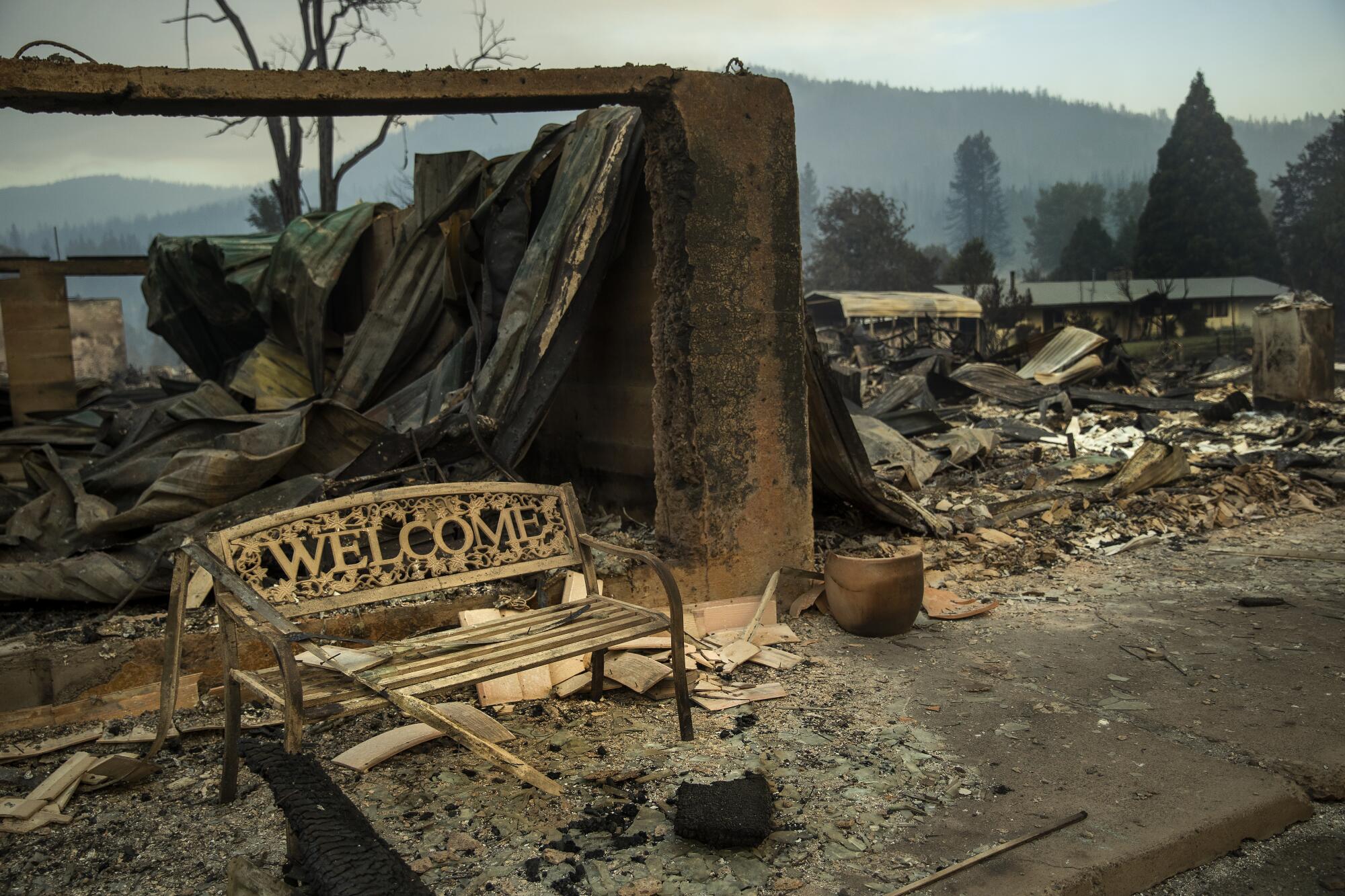
The second-largest California wildfire has burned more than 500,000 acres. See the remains through the smoke and ash.
- Share via
GREENVILLE, Calif. — With each passing mile, the smoke from the Dixie fire got thicker and thicker as I drove up Highway 89 in Plumas County. Visibility was decreasing at a steady pace to no more than 10 feet in front of me once I reached my destination of Greenville. If you have ever looked out of the window of a jetliner as it graces the clouds, that’s what it felt like, except this time I was the pilot — without any instrument training. My only thought was, if I drive slowly enough, I can hopefully react quickly enough to limit the damage if I hit something or someone.
I made it safely. Once I got out of the car, the smell of an overflowing ashtray filled my nose. This was one town I was sure of where nobody on this day was anti-mask.
The smoke that hung in the air made it impossible to immediately see how decimated the town was. As I walked in, seeing structure after structure burned to the ground, the terrible reality set in. And all those once-beautiful trees are completely scorched. The only thing — it seemed to me — that was still green in Greenville was the name itself.











Photo editing by Jacob Moscovitch.
More to Read
Sign up for Essential California
The most important California stories and recommendations in your inbox every morning.
You may occasionally receive promotional content from the Los Angeles Times.

















